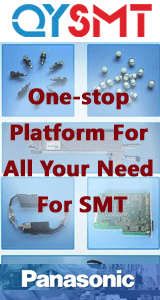| Hello all | I have a question concerning whether or not there is any special requirements to follow for assembly of a Polyimide PCB card. The customer has the following information on there documentation but since we have never built anything with Polyimide PCB's this is new. The board is to be 6 layers with a thickness of .056" +/- .005". There is no solder mask and no silkscreen, no copper nomenclature on board. This is an all leaded assembly with the requirement of soldering components to pcb with Hi-temp solder. We are anticipating we will handsolder followed by water washing for the assembly process. | Any info will help. | Thank you, | Dan Burnikel | Polyimide PCB's, from a fab standpoint, are little different than those using epoxy resin systems. Polyimide provides one big advantage concerning Tg. It can go as high as 270 degrees C. However, it should be cured only to about 250 C.
What all this means to you is simple. These boards take more heat over longer periods even though their Z axis expansion is about the same (50-60 ppm/C. - not forgetting copper plating thickness and ductility requirements).
In turn, this means these boards are capable of more thermal input, as in soldering, over longer periods before hole walls, and laminate, come apart (crack and delaminate, respectively). This allows using higher temperature solders, and soldering techniques, to a point. That point must be determined using test coupons or spare/scrap boards followed by X-Sectional analysis. This may have already been determined by input from customers concerning solder composition and required thermal characteristics.
The prime concern must be focused on how high the temperature at what rate, and for how long. Answer these questions and you'll have your capability, or not, to do the job.
Earl Moon
reply »
![]()
![]() Hello all
I have a question concerning whether or not the...
- Jun 02, 1999
by
Hello all
I have a question concerning whether or not the...
- Jun 02, 1999
by
![]()
![]() | Hello all
| I have a question concerning whether or not...
- Jun 02, 1999
by
| Hello all
| I have a question concerning whether or not...
- Jun 02, 1999
by
![]()
![]() Hello Dan,
I have recently started using polyimide, but n...
- Jun 02, 1999
by
Hello Dan,
I have recently started using polyimide, but n...
- Jun 02, 1999
by






